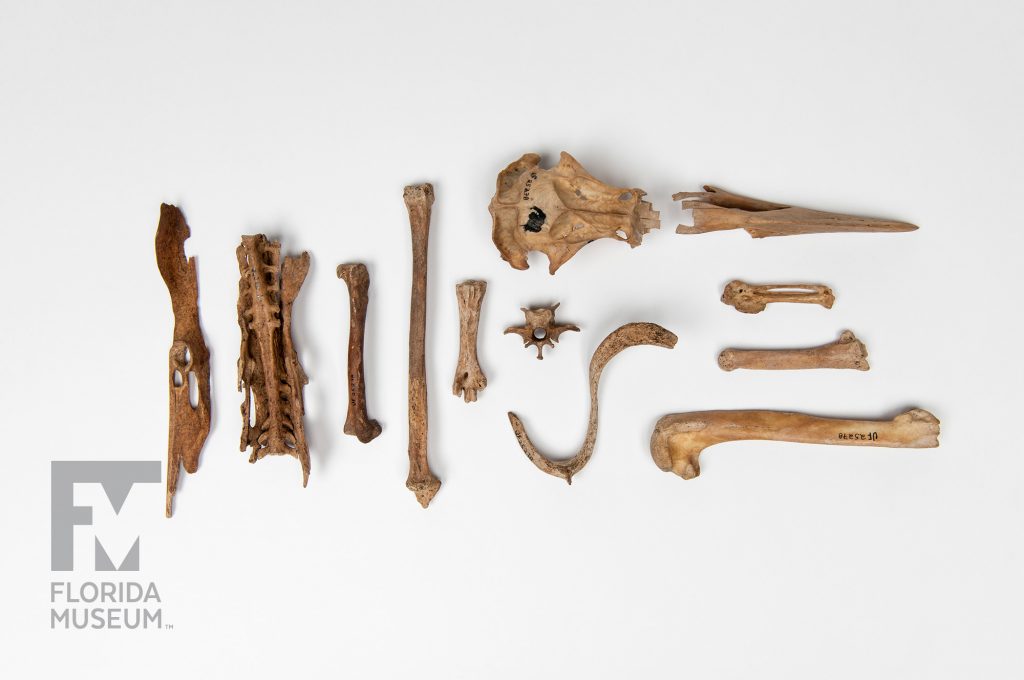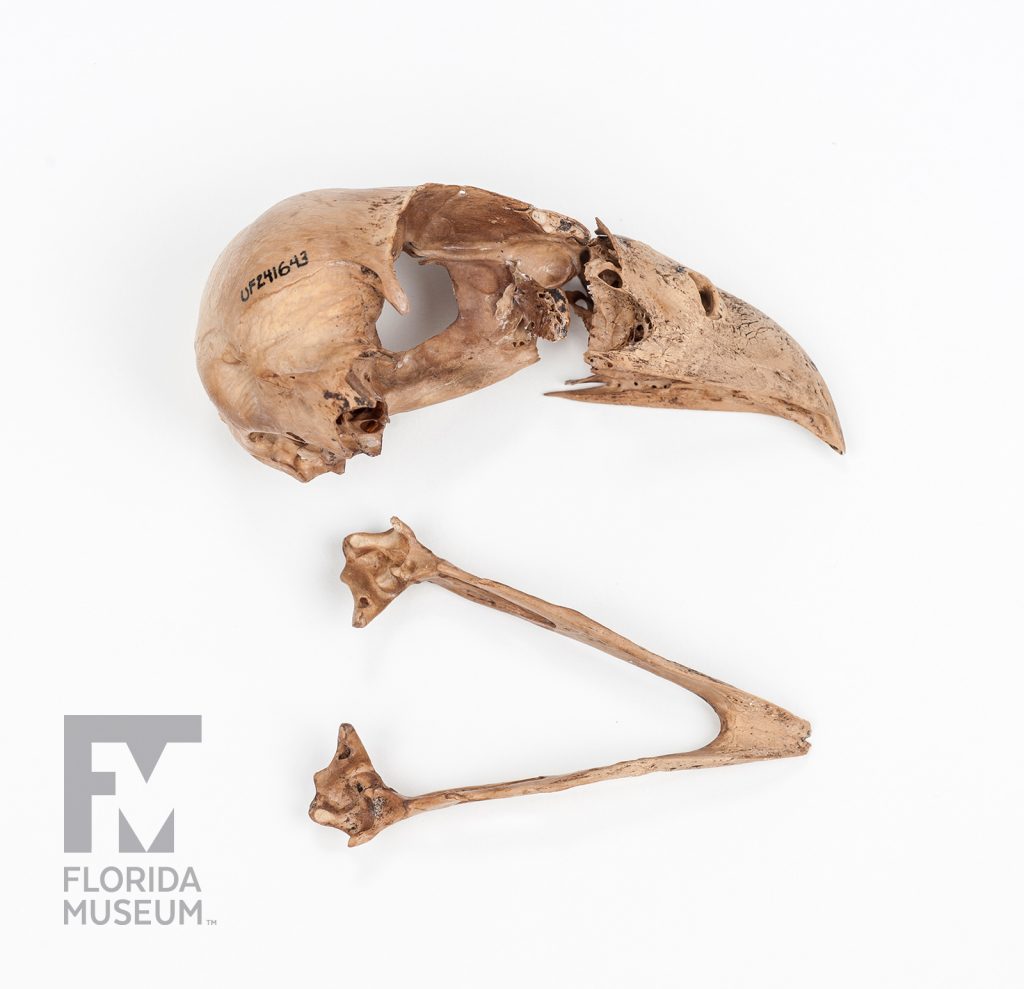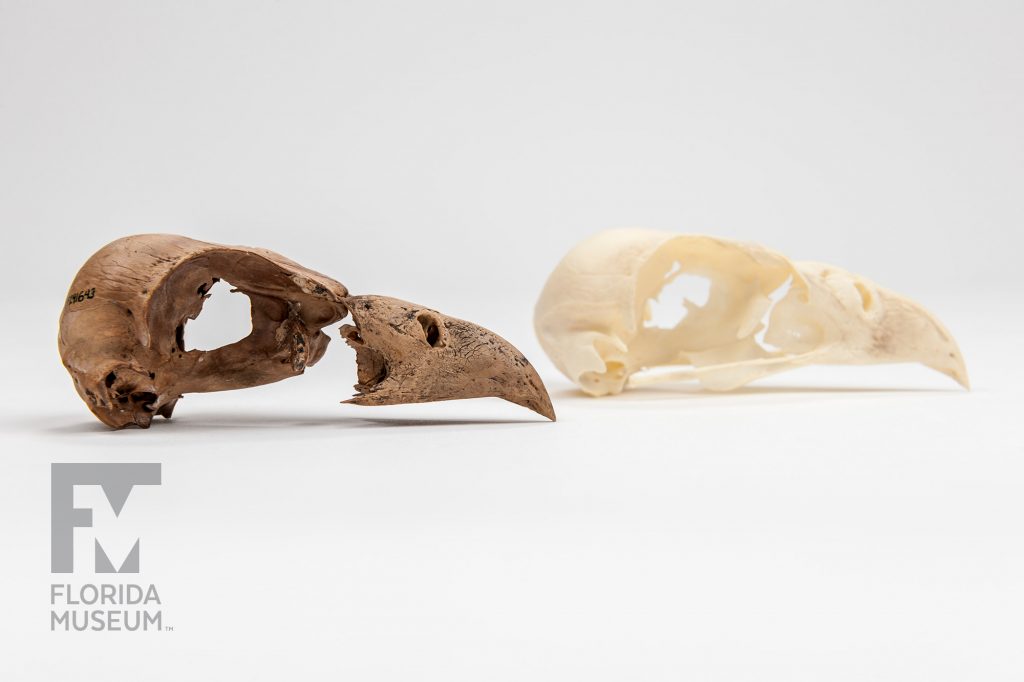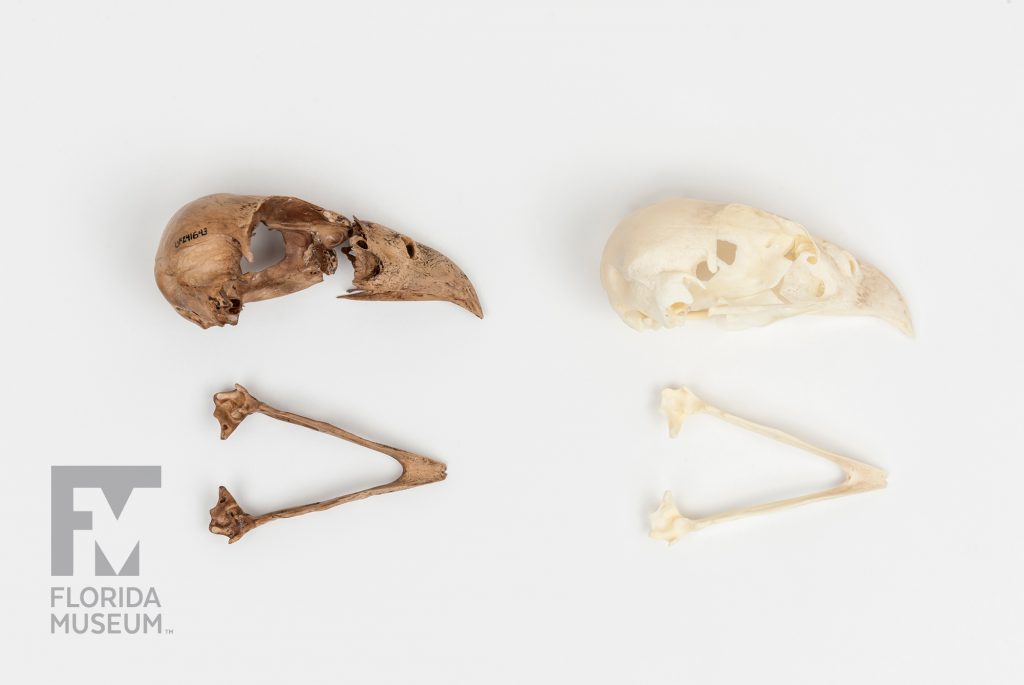This large, flightless seabird once nested on seaside cliffs on both sides of the Atlantic Ocean. The last Great Auks lived on Funk Island off Newfoundland, where they were wiped out by sailors in 1844.
Summary
Great Auk Bones (Pinguinus impennis)
Found in an archaeological midden, Newfoundland, Canada, May 1958
Collection
Story
The bones that are lying here in front of you – large, pretty stout bones – belong to a Great Auk. The Great Auk became extinct in about 1844 with the last population on Funk Island, a little island northeast of Newfoundland.
The Great Auk used to be widespread in the north Atlantic Ocean on cliffs on the mainland and offshore islands, but in the whaling boom – especially in the late 1700s-early 1800s – sailors would go ashore and kill Great Auks in huge numbers. They couldn’t fly; they were very tame on their nesting grounds. The Great Auk was a seabird – it ate fish – and sadly the people didn’t realize at the time that they were killing off the last of this species. It wasn’t until a decade or two later that people realized that this population on Funk Island that got wiped out in 1844 was in fact the last population left on earth of the Great Auk.
We have bones of the Great Auk here in Florida. They show up in archaeological middens that are only about a thousand years old. In historic times – the last few hundred years – there are no Great Auk sightings or records this far south. The Great Auk records that we find in Florida probably represent the little ice age when the North Atlantic was a little bit cooler than today and these birds were spending the winter in Florida and were taken by Native Americans as part of their food.
If the Great Auk had been able to survive on just one more island for probably a few more decades we’d probably still have Great Auks today. It just happened to die out a few decades before there was really even any talk of conservation.
David Steadman
Curator, Ornithology*
Florida Museum of Natural History
Exhibit
On display Sept. 23, 2017-Jan. 7, 2018, Rare, Beautiful & Fascinating: 100 Years @FloridaMuseum celebrated the Museum’s rich history. Each Museum collection was asked to contribute its most interesting items and share the stories that make them special. Though the physical exhibit is closed, this companion website remains online, providing an opportunity to experience the Florida Museum’s most treasured specimens.
Exhibit Area: Extinction
Theme: Extinct Birds
 Want to see more? Explore more than 300 breathtaking color photos of plants, animals, fossils and cultural heritage materials from the Florida Museum of Natural History’s collections in the award-winning book All Things Beautiful available from the University Press of Florida.
Want to see more? Explore more than 300 breathtaking color photos of plants, animals, fossils and cultural heritage materials from the Florida Museum of Natural History’s collections in the award-winning book All Things Beautiful available from the University Press of Florida.
*This title was accurate at the time the exhibit was on display in 2017. Please visit the collection website to verify current staff and student information.



